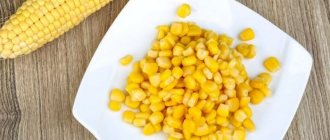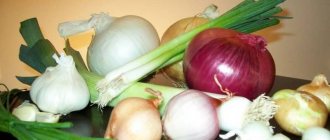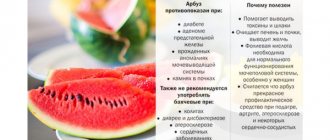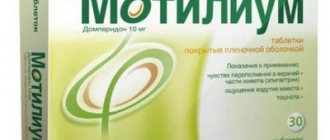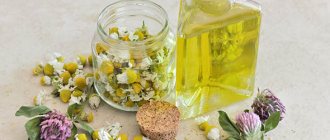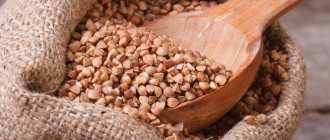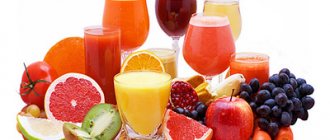Useful properties of watermelon
The pulp of the berry contains a large amount of vitamins and minerals necessary for humans. Includes:
- carbohydrates and coarse fiber, which allows you to eat watermelon even with exacerbation of gastrointestinal diseases, in particular, with aggravated pancreatitis;
- potassium salts;
- vitamins of group B and PP;
- acids: folic and ascorbic.
Watermelon pulp contains natural sugars, but in small quantities. They cannot cause harm to the inflamed mucous membrane, as well as to the body as a whole. Therefore, the berry is included in diets for gastritis with different levels of acidity.
The benefits of watermelon for gastritis of the stomach are explained by its chemical composition
Thanks to its juiciness, watermelon helps to gently cleanse the body of accumulated toxins, which are formed in fairly large quantities during the development of gastritis. In addition to the digestive tract, watermelon juice cleanses the kidneys well, removing stones and sand from them.
Another advantage of watermelon is the lack of irritation on the inflamed walls of the stomach and intestines, so the berry is allowed for all types of gastritis, and the atrophic format in particular. The exception is the hyperacid form of gastritis. The disease is characterized by a sharp increase in acidity levels.
When consuming berries and fruits, additional production of hydrochloric acid occurs, which causes pain. They become especially pronounced if the berry was eaten in the morning on an empty stomach. Therefore, if erosive hyperacid gastritis is diagnosed, it is recommended to avoid watermelon even during a period of stable remission of the disease.
In general, consuming watermelon for gastritis does not cause a feeling of heaviness in the stomach, and the sweet juice helps get rid of the unpleasant aftertaste typical of this pathology.
Watermelon perfectly compensates for the lack of nutrients and vitamins, which is often observed during inflammation of the gastric mucosa.
And if we talk about whether it is possible to eat watermelon with gastritis, then the answer will be positive. But in everything you need to observe moderation. Nutritionists allow you to eat up to 150 grams of pulp even with gastritis with high acidity.
Read also: Gastroesophageal reflux disease in children
To understand the reaction of the stomach to the berry, you need to listen to your feelings: if a person feels heaviness, belching, bitterness and even pain appear, then you should refuse it until a stable remission occurs.
You can eat watermelon when the stomach lining is inflamed, but overeating is highly discouraged. Sometimes watermelon harms the patient through his own fault. The desire to eat more sweet pulp causes the stomach to become full and the inflamed walls to stretch, which causes pain.
Diet for gout and high uric acid - what is possible and what is not, menu
Metabolic disorders in the body, in particular, an increase in the level of uric acid in the blood and extracellular fluid, is the cause of a serious disease - gout. One of the main factors causing this imbalance is considered to be an increased content of purines in food.
The disease can also be triggered by insufficient removal of uric acid from the body through the excretory system and intestines, as well as some chronic pathologies. The retention of this substance (MK) in the body leads to impaired kidney function and the deposition of salts in tissues and joints.
The primary measure to combat diseases caused by metabolic disorders is lifestyle correction: making changes to diet, reasonable physical activity and sports, maintaining mental balance through meditation, healthy rest, hobbies, walks, etc.
Diet for gout, do's and don'ts (table)
A diet for gout and high uric acid is a balanced therapeutic diet that helps stabilize the condition of the entire body, normalize purine metabolism and reduce the level of urate in the blood.
Its main goal is to limit purines ingested from food, as a result of which the formation of uric acid in the body decreases.
First of all, purine-rich foods are excluded or minimized from the diet, enriching the menu with healthy foods that help eliminate excess uric acid, including fruits, eggs, milk, fermented milk drinks, alkaline mineral waters and pure spring water.
Diet for gout and high uric acid - what is possible and what is not (food table)
| Product category | Authorized products | Prohibited foods |
| Meat | Low-fat varieties of meat and poultry without skin, cooking method - only boiling and steaming; it is permissible to consume 150 grams of white meat or fish no more than 3 times per week. | Meat of all young animals, veal, lamb, suckling pig, fatty meats, offal, all sausages, canned meat, smoked meats, poultry skin, lard, any fried meat products. |
| Fish | Boiled lean varieties of fish during the period of remission no more than 2-3 times a week. In case of exacerbation, fish is completely excluded from the diet. | Fatty fish: tuna, salmon, salmon, herring, mackerel, pike perch, vardina, herring, trout, perch and some other types of fish, salted, smoked and canned fish, all types of seafood, caviar. |
| Vegetables | Pumpkin, cucumbers, squash, zucchini, potatoes, beets, carrots, turnips, celery, onions, garlic, watercress, artichokes, cabbage (limited), all other vegetables not included in the list of prohibited vegetables, boiled and stewed or steamed. | Asparagus, sorrel, spinach, eggplant, radish, corn, early leafy greens, legumes, all types of canned vegetables, including pickled, pickled, salted and other homemade preparations, mushrooms. |
| Cereals | Rice, wheat, pasta, rye and wheat bread (in moderation). | Legumes, bran. |
| Eggs | Chicken and quail eggs (no more than 1 piece per day). | Fried eggs. |
| Fruits and berries | Bananas, figs, citrus fruits, watermelon, melon, persimmon, mango, avocado, plum, peach, apples, pears. | Lingonberries, raspberries, rhubarb, cranberries, strawberries, all dried fruits, especially raisins, the only exception being prunes. |
| Dairy | Skimmed whole milk, natural yogurt, fermented milk products, low-fat cottage cheese, sour cream, soft unsalted cheese. | Fatty foods, salty and spicy cheeses. |
| First meal | Vegetarian, lean, cold (okroshka, beetroot soup, gazpacho, tarator) and milk soups, cabbage soup, borscht. | Soups prepared in rich or recycled meat, fish and mushroom broths (up to 50% of the purines from the product are transferred into the broth when cooking meat). |
| Sauces | Dairy, fruit, vegetable, white sour cream sauces. | Ketchup, mayonnaise, everything cooked in meat broth, hot and spicy seasonings. |
| Dessert | Berry and fruit jam, marshmallows, marshmallows, natural marmalade, jelly, mousses, honey, jam. | Chocolate, cocoa, cakes, pastries, butter cookies. |
| Fats | Unsalted butter, first cold-pressed vegetable oils (sunflower, olive, pumpkin, sesame, flaxseed, soybean, grape seed, nut). | Animal and cooking fats, margarine. |
| Beverages | Non-carbonated alkaline mineral waters, rosehip infusion, green tea, jelly, compotes, citrus fruits and fruit juices diluted with water. | Coffee, strong tea, alcohol in any form. |
It’s convenient to print out a table of foods that you can and can’t eat if you have gout and hang it in your kitchen. This way she will always be at hand.
A diet for gout of the legs (antipurine diet) allows you to take control of the disease and achieve stable remission. Cooking methods: preference is given to boiling and steaming. From time to time, you can introduce fried foods into your diet, with the exception of meat and fish.
Diet for gout during an exacerbation
When the disease worsens, the patient is prescribed a strict diet for 2 weeks (table No. 6), in which preference is given to food in liquid form. Fish is completely removed from the diet, and the amount of meat is reduced to a minimum.
The basis of the menu is vegetable soups, liquid porridges, fermented milk products, juices, jelly, compotes, weak tea, alkaline mineral water.
Compliance with the drinking regime is mandatory. Drinking about 2 liters of water per day helps the body eliminate uric acid salts naturally. Meals should be fractional, 4-5 times a day, in small portions.
Fasting and long breaks between meals contribute to the activation of UA synthesis processes.
Diet for gout and high uric acid - weekly menu
Based on the list of prohibited and permitted foods, each patient can create a diet for the week. In case of any complications, you should contact an experienced nutritionist who will adjust the menu taking into account the characteristics of your body.
Do not forget to drink pure or mineral water (prescribed by your doctor) between meals.
Sample menu for the week
Monday
- Breakfast: 1 egg omelette with milk, liquid oatmeal, chicory root drink.
- Lunch: banana puree with muesli, mineral water.
- Lunch: pureed vegetable soup with potatoes and cauliflower, carrot schnitzel with sour cream sauce, compote.
- Afternoon snack: biscuits and a glass of fermented baked milk.
- Dinner: pumpkin porridge with rice, salad of fresh cucumbers, green onions and parsley, dressed with olive oil, chamomile tea.
Tuesday
- Breakfast: rye bread toast, boiled egg in a bag, salad of boiled grated beets with garlic and prunes, seasoned with corn oil.
- Lunch: cottage cheese casserole with apple jam, grapefruit juice.
- Lunch: vegetarian borscht with sour cream, boiled rabbit stewed in milk, mashed potatoes, rosehip infusion with honey.
- Afternoon snack: banana and berry jelly.
- Dinner: lean cabbage rolls stuffed with rice, carrots and pumpkin, pear, lemon balm tea.
Wednesday
- Breakfast: carrot zrazy with fruit, egg white omelette, weak coffee with milk.
- Lunch: milkshake with peach.
- Lunch: thin rice soup with carrots, cauliflower stewed in milk, dried fruit compote (apples, prunes, pear).
- Afternoon snack: semolina pudding with apricots.
- Dinner: gazpacho, pasta with cottage cheese and sugar, kefir.
Thursday
- Breakfast: cottage cheese salad with cucumbers, pieces of unsalted feta cheese and green onions, dressed with nut butter, a slice of wheat bread, rose hip decoction.
- Lunch: blueberry jelly.
- Lunch: pureed pike fillet soup, beet salad with sour cream, jacket potatoes (2 pcs.), compote.
- Afternoon snack: curd pudding.
- Dinner: milk rice porridge, chicory with milk.
Friday
- Breakfast: wheat porridge with milk, toast, weak coffee with milk.
- Lunch: pear.
- Lunch: vegetable soup, vinaigrette without peas, potato cutlets, sea buckthorn tea.
- Afternoon snack: cottage cheese with cherry sauce, jelly.
- Dinner: okroshka, steamed rice pudding, mint tea.
Saturday
- Breakfast: semi-viscous buckwheat porridge, soft-boiled egg, mate tea.
- Lunch: carrot casserole with millet, rosehip infusion.
- Lunch: milk noodle soup, potato zrazy with carrots and onions, squash caviar, jelly.
- Afternoon snack: plum juice.
- Dinner: steamed chicken fillet meatballs with liquid mashed potatoes, ginger root infusion with lemon.
Sunday
- Breakfast: beetroot and apple salad with yogurt.
- Lunch: cottage cheese-banana mousse.
- Lunch: beetroot soup, stewed vegetable stew with zucchini, apple compote.
- Afternoon snack: pear juice.
- Dinner: steamed cheesecakes with honey, carrot casserole with sour cream sauce, tea with milk.
Despite the restrictions, try to eat as varied as possible, preparing delicious dishes from the permitted list. If you want to achieve stable remission from gout and reduce the level of uric acid in the body, then you cannot do without strictly following a diet.
Show your imagination and culinary ingenuity, choose the most original dish recipes for yourself, and always be healthy!
Treatment with watermelon
Watermelon will be useful not only for gastritis, but also for stomach ulcers. A healing drink that accelerates mucosal regeneration processes is prepared from berry peels. Ingredients:
- washed watermelon rinds;
- boiling water – 1 l.
The peels must be dried and ground to a powder. Take 5 tbsp per liter of boiling water. l. product. The resulting mixture must be boiled at a minimum boil and constant stirring for half an hour. Then close the lid and wrap in a warm towel, leaving for an hour. Before use, filter the drink and drink 1 glass before meals.
Since split meals up to 6 times a day are recommended for gastritis, during the day the patient should drink at least 6 glasses of a drink made from dry watermelon rinds.
How to properly use watermelon when you are sick
It is allowed to include the fetus in the diet only during long-term remission. In the presence of other gastrointestinal pathologies (for example, pancreatitis), the berry is prohibited.
Nutritionists consider only the pulp from the center - the sweetest - suitable for consumption. The layers that lie closer to the crust are often filled with nitrates and their derivatives. These substances are harmful to the body as a whole, and in case of gastrointestinal diseases, they further burden it.
Norms
The main rule: everything should be in moderation . Even during the period of remission of gastritis, do not be greedy: kilograms of watermelon eaten will only harm a weakened stomach. Often the pain and feeling of heaviness from such a diet return.
The daily allowance allowed by doctors should not be higher than 500 g. Ideally, eat 2-3 slices per day. This will speed up recovery and will not cause aggravation.
Attention! Do not eat watermelon on an empty stomach: it causes pain and bloating. It is better to eat the fruit as a dessert.
There is an opinion that for any gastritis, even hyperacid, a little watermelon can be consumed. If you really want it, there is no acute pain and the sweet piece from the center of the fruit does not weigh more than 150 g, you can eat it and evaluate your well-being.
Persistent heaviness in the stomach, belching, heartburn, dryness and bitterness in the mouth or pain are signs that it is better to wait for a stable remission.
How to choose the “right” watermelon
In order not to cause additional harm to the stomach, you need to know how to choose a safe striped berry.
There are some useful tips:
- You can buy watermelons starting in August. They ripen on their own, without artificial stimulation, and therefore are safe for a sick stomach.
- A watermelon that is ripe at the right time makes a slight cracking sound when squeezed.
- To check whether the pulp contains nitrates or not, place it in a glass of water. If the watermelon is “clean”, the liquid will only become slightly cloudy. When the berry is stimulated, the water will change its color: it will turn red or pink.
- The natural ripening of a watermelon can be assessed by the appearance of the pulp. If sugar grains are visible on the cut surface, and the veins are practically invisible, then the fruit is ripe in due time. Thick yellow veins are a clear sign of chemical use.
Features of the correct and safe choice of product
These simple tips will help you choose a naturally ripened watermelon. Such a berry will not cause harm to the stomach and can be safely included in the menu.
Read also: How to check stomach acidity at home
Eating watermelon for gastritis with high acidity
In the stage of remission or when acute inflammation subsides, it is recommended to eat the fruit in moderation and in small portions. In order not to harm digestion, choose berries that are completely ripe and as sweet as possible.
Properties
What makes watermelon special is its sugar composition. Its pulp stores healthy and simple fructose, which is absorbed faster than other sugars and minimally irritates inflamed tissues. Therefore, eating watermelon for gastritis is more acceptable than other fruits, the sweetness of which is responsible for glucose.
Benefits and harms
Watermelon is useful for gastrointestinal pathologies because:
- improves microflora;
- activates metabolic processes;
- reduces general gastrointestinal acidity;
- removes toxins from the body;
- lowers cholesterol levels;
- enhances intestinal motility;
- strengthens the cardiovascular system;
- enriches the body with B vitamins;
- helps to get rid of excess weight;
- has antioxidant and anti-inflammatory properties.
However, when consumed frequently and in large quantities, watermelon causes:
- allergic reactions;
- impaired renal and excretory function;
- poisoning of the body;
- indigestion.
How does it affect the stomach?
Eating fruit always causes an increase in acidity. This is due to their composition: acids, complex sugars, fiber. Fruits actively stimulate taste buds, which increases the amount of hydrochloric acid produced by the stomach.
Attention! Some nutritionists recommend eating berries on an empty stomach or as a separate meal to cleanse the body. This cannot be done with hyperacid gastritis.
With increased acidity, even without signs of inflammation, excessive consumption of the same watermelon can cause heartburn. The effect will be stronger if you eat several slices on an empty stomach. This is especially not recommended for erosive gastritis at any stage.
Melons for gastritis
Melon is a rather difficult sweet dessert to digest, so if you have gastritis, you are allowed to eat no more than 100–150 grams of pulp during the day. In this case, you need to carefully listen to your feelings.
You need to eat melon separately from other foods. The consumption rules are as follows:
- 1 hour before meals;
- 2 hours after eating.
But since melon can enhance the production of hydrochloric acid, during the period of exacerbation of gastritis with high acidity, it should be excluded from the menu before the start of the remission period.
Gastritis is a serious pathology of the stomach that requires strict adherence to all recommendations of the attending physician. This also applies to the daily diet. Only a doctor, after confirming the type of gastritis, can tell whether a patient can eat striped berries or not.
What fruits and berries can you eat if you have gastritis?
What are the dietary features for gastritis? According to disappointing statistics, gastritis now affects about 63% of the population, and many do not even know about it for the time being. Of course, poor nutrition plays a big role in this. With this disease, it is necessary to follow certain rules in the organization of nutrition. Moreover, it does not matter what form of the disease a person suffers from: mild or severe. In severe cases, it is imperative to adhere to a certain diet, and in mild cases, this is necessary so that the disease does not become severe and in order to prevent exacerbations of the disease.
A few basic nutritional rules that will help alleviate gastritis
- chew food thoroughly;
- try to eat according to a schedule: at the same time, in small portions, 4-5 times a day;
- It is advisable to boil or steam food;
- limit, if possible, the consumption of spicy, very salty, fried, smoked foods, soda and alcoholic beverages;
- During an exacerbation, it is recommended to avoid juices and raw fruits.
Outside of exacerbation, on the contrary, they must be included in the menu, since they have a beneficial effect on the functioning of the stomach and intestines and are rich in many vitamins and nutrients. However, remember that with this disease you need to be careful when choosing fruits. After all, not everything can be eaten.
In what cases is the fruit contraindicated?
In order not to harm the body, watermelon is prohibited in the following cases:
- acute gastrointestinal diseases and exacerbations of chronic pathologies;
- simultaneous occurrence of several digestive diseases (no matter at the stage of exacerbation or remission);
- stones in the kidneys or ureters (the berry often provokes the movement of stones);
- acute dysfunction of the digestive system, especially with nausea and diarrhea.
Precautionary measures
To avoid problems after eating watermelon, it is important to choose it correctly:
- The best berries are sold in Russia from mid-August to mid-September. At other times they are often unripe and with chemicals.
- A ripe watermelon makes a loud cracking sound when pressed. If this is not the case, the fruit is most likely green or has been brought to ripeness artificially.
- If you place a piece of pulp in water, it does not turn pink or reddish, but simply becomes cloudy. Coloring is a sign of high nitrate content.
- The cut flesh does not have sharply visible veins or inclusions of grains of sugar.
- If the veins are pale or yellowish, it means that the berry has been treated with chemicals more than once.
Watermelon slices or halves can be stored for no more than 2 days in the refrigerator, wrapped in cling film.
Is it possible for other gastrointestinal problems?
For gastritis with low acidity, watermelon is not prohibited, but beneficial. However, it is not recommended to overeat: no more than 3 slices per day and not at one time.
If a person has an acute phase of inflammation and the diet is strictly gentle, it is better to abstain from the fruit.
For ulcers
Many doctors believe that during periods of exacerbation of gastric and duodenal ulcers, watermelon should not be eaten because it stimulates the production of hydrochloric acid. Ingestion of the fetus often greatly worsens the patient's condition.
During the remission stage, watermelon is allowed, but only as a dessert, on a full stomach and in small quantities. In stable remission, it is allowed to eat up to 2 slices per day.
For pancreatitis and cholecystitis
Is it possible to eat fruit with pancreatitis? Patients are allowed it only in fresh form and at the stage of remission.
Attention! If inflammation of the pancreas worsens, the berry will do harm. Even its one-time use in small quantities causes severe pain, heaviness, and increases the load on the diseased organ.
With cholecystitis, the fruit is eaten exclusively during the period of remission. Be sure to eat in small portions and fractionally, do not eat more than 250 g at a time.
If there are stones in the gall bladder, it is undesirable to eat watermelon: due to its choleretic properties, stones can begin to move along the ducts and clog them.
